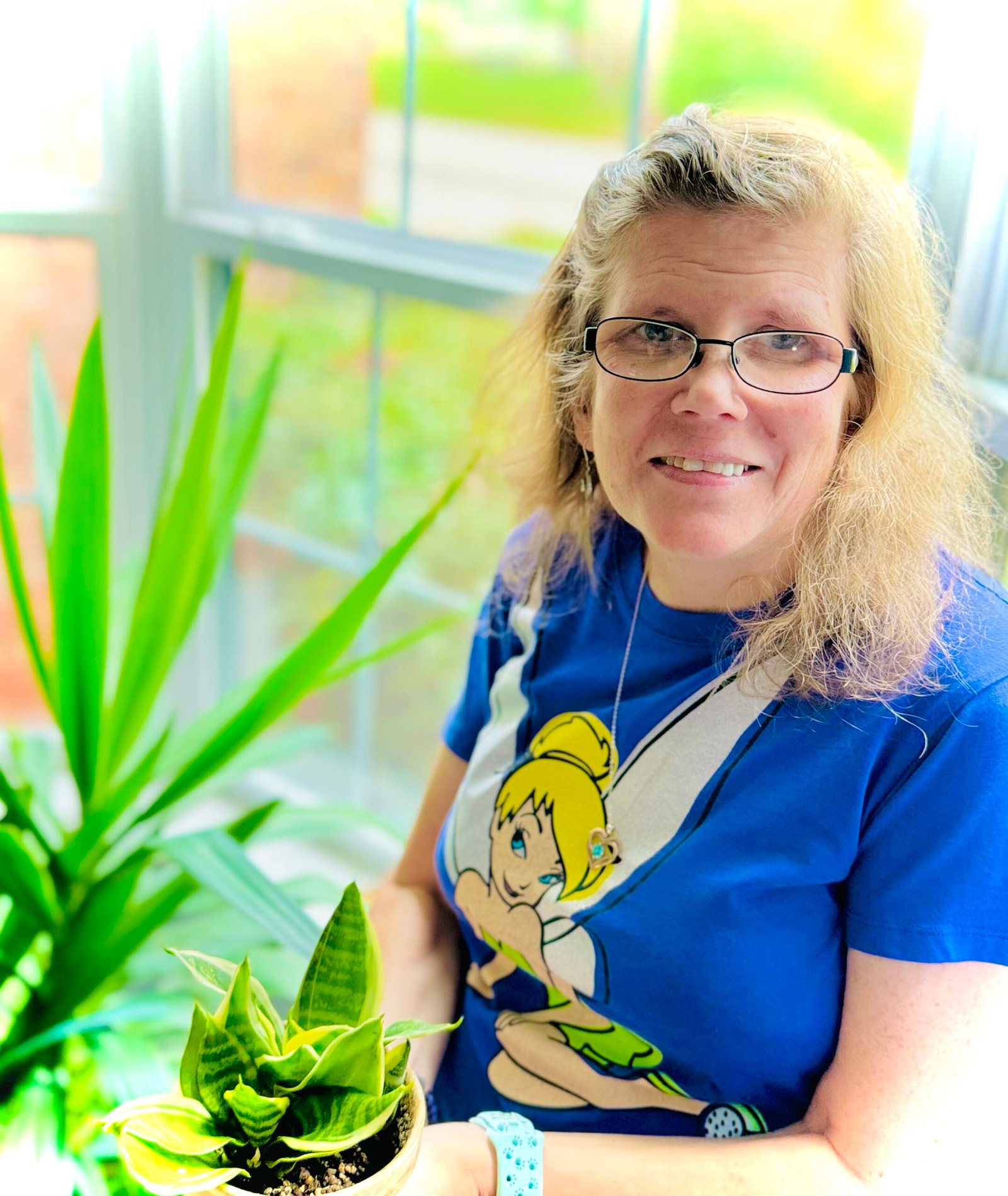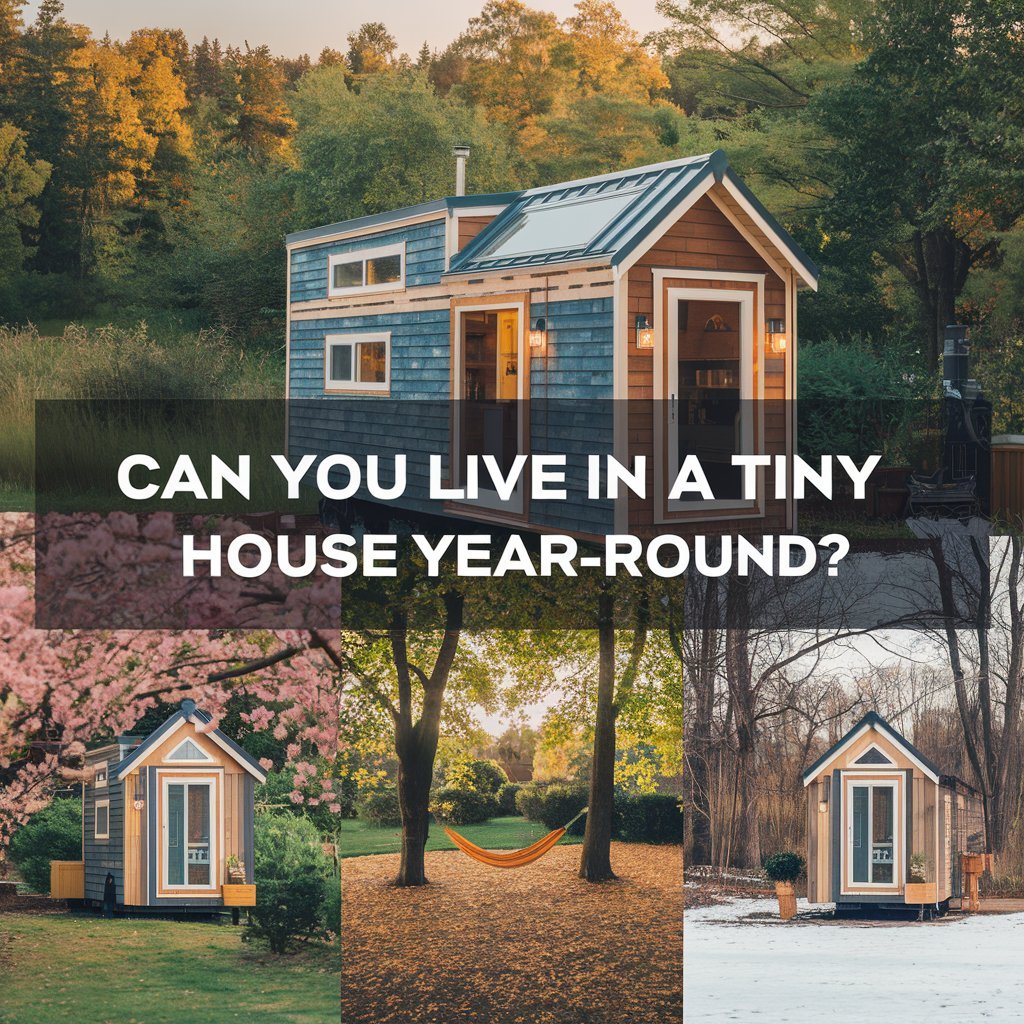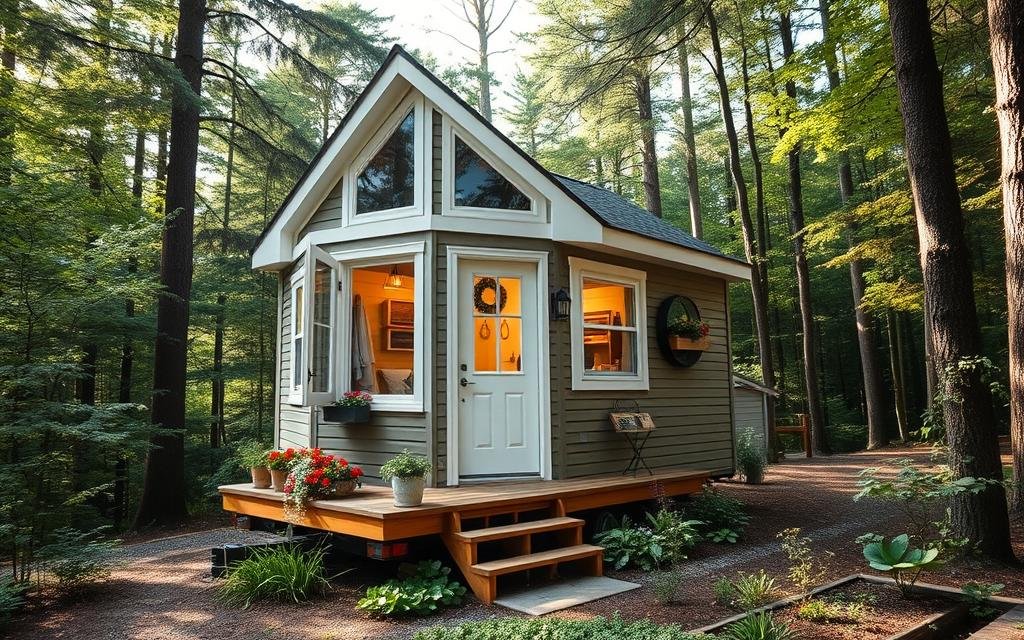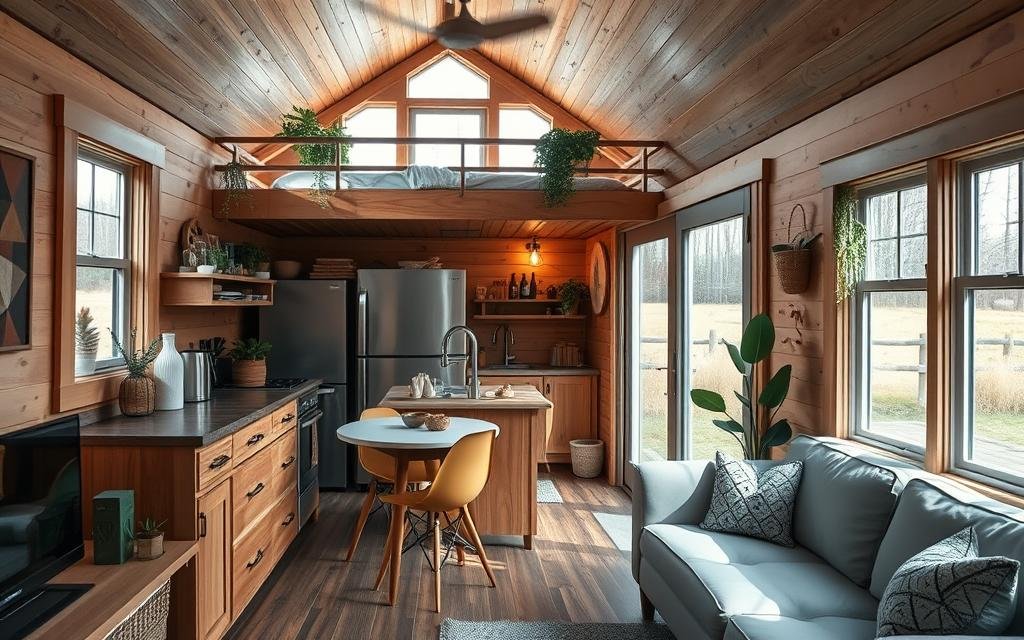Table Of Contents
Can You Live in a Tiny House Year-Round? Discover the Truth Behind Tiny Living
Key Takeaways
- Exploring the concept of permanent residence in compact dwellings and grasping the essence of tiny homes.
- Factors to think about for continuous habitation in a small space.
- Regulatory factors regarding residing in a tiny house.
- Modifications to daily habits necessary for life in a compact home.
- Selecting the ideal miniature residence for your needs.
- Transforming a small home into a comfortable and welcoming environment.
Can You Live In A Tiny House Year-round? | Understanding Tiny Homes
Living in a tiny house year-round is an appealing idea for many, especially within the burgeoning tiny house movement. These compact living spaces, often referred to as tiny homes, are designed for efficiency and sustainability, making them attractive for those looking to simplify their lives. Tiny houses typically feature innovative layouts that maximize space and functionality, allowing residents to live comfortably despite the smaller footprint.
The concept of year-round living in a tiny home poses unique challenges, such as adapting to varying climates and ensuring adequate insulation. Those who embrace the tiny-house lifestyle often find joy in the minimalism it promotes, leading to a more intentional and fulfilling way of life. Can you live in a tiny house year-round? The answer lies in thoughtful planning and consideration of available resources and personal preferences.
Can you live in a tiny house year-round? | Definition and Features of Tiny Houses
Tiny houses offer a unique approach to simple living, blending functionality with a minimalist lifestyle. These dwellings often resemble bungalows or small apartments, providing essential living spaces such as compact living rooms and cozy bedrooms. Many tiny homes are also designed as mobile homes, allowing homeowners to experience new locations while maintaining the comforts of home. The charm of a cottage garden adds to the appeal of living in a tiny house year-round, creating an inviting atmosphere that complements the limited interior space.
Living in a tiny house year-round requires thoughtful consideration of its features and layout. Homeowners typically opt for efficient designs that maximize space, making working from home more convenient and enjoyable. With the right insulation and energy-efficient appliances, a tiny house can comfortably accommodate year-round living. Whether it’s selecting the perfect location or customizing the interior, the journey to making a tiny house a long-term dwelling is both rewarding and practical. Can you live in a tiny house year-round? Absolutely, with the right choices and adjustments, this lifestyle can be fulfilling and sustainable.
| Feature | Description | Benefits |
|---|---|---|
| Space Efficiency | Smart layouts and multifunctional furniture | Maximizes usable space and reduces clutter |
| Energy Efficiency | High-quality insulation and energy-efficient appliances | Lower utility costs and a smaller carbon footprint |
| Mobility | Can be designed as a mobile home on wheels | Flexibility to change locations easily |
| Maintenance | Smaller spaces means less upkeep | Saves time and money on maintenance tasks |
| Community | Often part of tiny house communities | Fosters social connections and shared resources |
Benefits of Living in a Tiny House
Living in a tiny house offers a simplified lifestyle that prioritizes essential needs over excess. With innovative designs, many tiny homes feature a great room that combines living and dining areas, optimizing the use of space. The layout often includes clever storage solutions incorporated into furniture, such as couches that transform into beds or lofts that serve as bedrooms. This efficient use of space encourages a minimalist approach, allowing residents to focus on what truly matters.
Financially, tiny homes present significant advantages with reduced living costs. Homeowners can minimize or completely eliminate their mortgage, leading to financial freedom. Zoning laws may permit unique configurations like porches or decks, expanding usable space without compromising the tiny home’s essence. Such flexibility makes it easy for individuals to embrace the question, “Can you live in a tiny house year-round?” while enjoying comfort and functionality.
Year-Round Living Considerations
Living in a tiny house year-round raises several important considerations that potential residents must address. Understanding your lifestyle preferences is crucial, especially in choosing the right location for your tiny home village or secluded property in town. Factors such as climate and weather can significantly impact your experience. Tiny houses often utilize wood construction, which can be warm and inviting but may require more attentive maintenance in harsh conditions. The efficiency of your bathroom and kitchen amenities plays a role in comfort and functionality.
Many people also question the financial implications of tiny house living, wondering whether they can save money compared to traditional homes or travel trailers. Ultimately, can you live in a tiny house year-round? The answer lies in careful planning and adaptability to ensure a sustainable and enjoyable living experience.

Climate and Weather Factors
Living in a tiny house year-round requires careful consideration of climate and weather conditions. Extremes in temperature can significantly impact your tiny-home living experience. For tiny house dwellers in colder climates, proper insulation and heating solutions become essential. The right tiny house design can help keep warmth in during winter months, while ventilation is crucial in warmer seasons to maintain a comfortable environment. Understanding these factors can shape your tiny house lifestyle, transforming it into a cozy retreat regardless of external conditions.
Regions with distinct weather patterns can influence the suitability of tiny house living. If you’re exploring the tiny house community, it’s vital to consider how rain, snow, or humidity may affect your small house. Investing in durable materials and establishing effective drainage systems can mitigate weather-related challenges. Those pondering, “Can you live in a tiny house year-round?” must weigh these climatic elements to ensure a sustainable and enjoyable tiny house experience throughout all seasons.
Insulation and Energy Efficiency
Effective insulation is crucial for anyone considering if they can live in a tiny house year-round. Proper insulation holds the key to maintaining a comfortable temperature in various climates, allowing for sustainable living in tiny homes. Many tiny house builders prioritize energy-efficient materials to combat heat loss and ensure that residents can enjoy living for ten plus years in a tiny house without significant temperature fluctuations. The growing tiny-house trend embraces these innovations, proving that small-not-tiny homes can be both cozy and functional.
Energy efficiency plays a vital role in minimizing utility costs for those engaging in tiny living. By selecting the right tiny home floor plan and utilizing appliances designed for small spaces, homeowners can significantly reduce their energy consumption. This not only contributes to a lower carbon footprint but also supports the concept of tiny house villages, where a sense of community thrives alongside sustainable practices. Understanding what a tiny home means in terms of energy efficiency is essential for anyone looking to embrace the advantages of living tiny.
Legal Aspects of Tiny House Living
Navigating the legal landscape of tiny house living is crucial for those considering a tiny lifestyle. The rise of the small-house trend has led to an increase in tiny home dwellers who are eager to embrace this lifestyle, yet zoning laws can be complex and vary significantly by location. Some areas permit the establishment of a mini home as a primary residence, while others may impose restrictions that could affect whether you can live in a tiny house year-round.
Tiny house friends often share experiences related to securing permits and adhering to building codes, which can be pivotal for ensuring that your sturdy house is compliant and suitable for permanent living. For those who view their tiny house as not just a trend but a long-term commitment, understanding these legal aspects is essential for fostering a successful tiny life.
Zoning Laws and Regulations
Zoning laws play a crucial role in determining whether you can live in a tiny house year-round. Many municipalities have specific regulations regarding the establishment of mini homes, which can affect tiny living spaces. Potential homeowners must navigate these regulations to ensure that their tiny-home shell complies with local zoning requirements. Some areas may permit tiny houses as permanent residences, while others only allow them in designated zones or for temporary use. Understanding the rules in your area is essential for those embarking on the tiny-house-craze.
Regulations often dictate how small living spaces can be constructed and where they can be placed. Owners of compact homes must be aware of restrictions that may apply to their homes, including setbacks, height limitations, and occupancy permits. Since many people seek alternatives to big homes for financial or lifestyle reasons, knowing the legal implications of tiny home ownership is vital. Making informed decisions about your own house ensures that your dream of living in a tiny house year-round can be realized without legal complications.
- Familiarize yourself with local zoning codes to determine if tiny houses are allowed in your area.
- Check for any specific requirements related to size and structure for tiny homes.
- Research whether your community has designated zones for tiny house living.
- Look into occupancy permits that may be needed for full-time residency in a tiny house.
- Understand setback requirements, which dictate how far your home must be from property lines.
- Stay informed about height restrictions that could limit your tiny home’s design.
- Consult with local officials or zoning boards to clarify any ambiguous regulations.
Building Codes for Tiny Houses
Tiny houses, often referred to as micro homes, face specific building codes that differ from those governing standard houses. These codes impact various aspects of design and construction, which raises the question, can you live in a tiny house year-round? Regulations may dictate minimum square footage, safety features, and even the inclusion of a small porch. Adhering to these codes is essential to ensure that your tiny dream house is not only functional but also safe and compliant with local laws.
Living in a tiny house requires careful consideration of building codes to create a comfortable environment. Typical home standards might not apply, prompting potential tiny homeowners to adapt their plans. Customizing a small place can enable individuals to realize their dream home while staying within legal requirements. Ensuring that your tiny house is up to code can greatly enhance the experience of living in a compact yet vibrant living space.
Lifestyle Adjustments for Tiny House Living
Living in a tiny house year-round requires significant lifestyle adjustments, especially for those transitioning from large homes to more compact living arrangements. Understanding how to effectively manage space is crucial; many people choose to adopt a minimalist approach to ensure their new home remains functional and inviting. A sustainable house day becomes easier when each item serves a purpose, helping to minimize clutter.
For those considering a guest house or cottage setup, careful planning can create an interesting home environment that still meets comfort needs. With thoughtful layout choices, even a two-bedroom house can feel spacious, ensuring that living in a tiny house year-round is not just feasible but enjoyable. Ultimately, embracing these changes allows for a seamless transition to a new home lifestyle.

Minimalism and Space Management
Living in a small-not-tiny home requires a shift in mindset towards minimalism and effective space management. The challenge often lies in transforming a compact living space into a functional and inviting long-term residence. Organizing and decluttering a small area is essential for maximizing the living room area and creating a comfortable environment. With thoughtful planning, even small buildings can offer a level of comfort that makes it feasible to ask, “Can you live in a tiny house year-round?”
Embracing minimalism involves more than just reducing belongings; it’s about making conscious decisions about what truly enhances your life. Prioritizing essentials and multifunctional furniture helps establish a harmonious flow within a small area. This approach is particularly vital for households considering tiny homes as a second home or long-term living option. Innovative storage solutions and smart design can significantly improve efficiency in limited space, making year-round living in a tiny house an attainable reality.

Financial Implications of Tiny Homes
Living in a tiny home can significantly alter your financial landscape. A 200-square-foot home typically requires a far lower initial investment compared to an average home. For many, this housing solution presents a way to transition from temporary residence to a permanent one, fostering a smaller footprint that reduces maintenance and utility costs. Choosing a tiny house can make the dream of owning a new home sooner a reality, as financial commitments are generally less burdensome.
The financial implications extend beyond initial costs. Sustainable homes often come with lower energy bills, making them more economical in the long run. The appeal of a ready-made guest house further enhances the investment, providing an opportunity for passive income through rentals. This small way of life not only encourages mindful spending but also promotes a simpler lifestyle, aligning with the question: Can you live in a tiny house year-round?
Choosing the Right Tiny House
The question of whether you can live in a tiny house year-round often hinges on how well the space is designed and equipped. For those seeking a sustainable dwelling, the choice of layout and amenities becomes crucial. Unlike traditional homes, tiny houses require efficient use of limited square footage to create an ideal living situation.
Carefully selecting features like a compact kitchen and a functional tiny bathroom can enhance comfort while maintaining clean living standards. Transitioning from a previous home to a high-quality housing option is feasible when the small size is complemented by smart design choices. Ensuring that the household is ready for year-round living involves considering insulation and energy efficiency, making the tiny house a viable alternative for those looking to minimize their footprint.
| Feature | Importance | Considerations |
|---|---|---|
| Insulation | Essential for year-round comfort | Choose high-quality materials to maintain temperature |
| Compact Kitchen | Maximizes space for cooking | Look for multi-functional appliances and storage solutions |
| Functional Bathroom | Maintains hygiene in a small space | Consider composting toilets and space-saving designs |
| Energy Efficiency | Reduces utility costs | Invest in solar panels and energy-efficient appliances |
Size and Layout Options
Choosing the right size and layout for a tiny house is essential to ensure maximum comfort and functionality. A common misconception is that tiny homes lack the amenities of a normal home. In reality, many tiny houses cleverly incorporate formal living rooms and open-concept spaces to enhance the living experience. Options like cottages or compact designs with multiple floors can provide the feel of a single-owner home without compromising on essential living space. Thoughtful layouts allow residents to enjoy the benefits of mortgage-free living while still having a cozy area to relax and entertain.
Designing your tiny home means considering how best to utilize every square foot. Efficient use of space can transform a small space into an inviting environment with all the necessary housing features. Custom furniture, built-in storage, and multifunctional areas can make a significant difference in daily life. Many tiny house dwellers find that, with the right planning, their homes can rival traditional homes in comfort and style, proving that the question, “Can you live in a tiny house year-round?” can be answered with a resounding yes.
Essential Amenities for Year-Round Comfort
Living in a tiny house year-round often hinges on the inclusion of essential amenities that cater to comfort and functionality. A well-designed 192-square-foot home can feature multi-purpose furniture, such as pull-out couches, to maximize space without compromising on comfort. For some, opting for a single loft design with creative storage solutions allows for a more flexible room layout, accommodating visitors for a few nights while maintaining the tiny house’s cozy feel. Understanding housing design elements can help navigate housing laws that may impact the overall usability of your tiny space.

Comfortable amenities are vital in addressing potential housing gaps typically seen in tiny homes. Effective heating and cooling systems ensure a stable environment throughout the seasons, safeguarding against extreme weather. Incorporating well-planned rooms, even in a compact layout, enhances the livability of the homestead. Emphasizing practical features and smart design can inspire confidence in the question, “Can you live in a tiny house year-round?” With creativity and consideration, it’s possible to create a tiny house that feels like a permanent home.
Making a Tiny House Feel Like Home
Creating a sense of home in a tiny house involves thoughtful design choices and personal touches. A fixed home layout can leverage space while accommodating essential amenities. Well-designed bedroom lofts and multifunctional furniture contribute to both comfort and function. If you incorporate porches or outdoor spaces, it expands your living area, making it feel more expansive. The challenge of small bathroom isn’t a deterrent; clever storage solutions can enhance usability. Embracing a simpler life with this type of accommodation raises the question, can you live in a tiny house year-round? With the right adjustments, many find that this lifestyle not only suits their needs but offers a unique charm compared to a traditional foundation home.
Interior Design Tips
Designing a cozy interior in a tiny home can address the question, “Can you live in a tiny house year-round?” A thoughtful layout is essential. Opt for multi-functional furniture that can adapt to your needs. For instance, a mini dining table can serve as a workspace during the day and transition into a dining area for couple nights. Incorporating cottage garden plants within your space not only adds greenery but also helps improve air quality. This greenery brings a sense of warmth, making those summer nights feel even more inviting.
Maximizing space efficiently is key in tiny house living, especially with the current housing demand driving the popularity of the hype small-not-tiny movement. Prioritizing household possessions through minimalist choices can significantly enhance comfort. Choose doors and windows that let in natural light, creating an airy atmosphere even within limited square footage. Clever storage solutions can open up floor space while keeping essentials accessible, ensuring that every corner serves a purpose.
Outdoor Spaces and Extensions
Creating outdoor spaces can significantly enhance the experience of tiny house living. A well-designed outdoor area offers an extension of the living space, allowing for relaxation and entertaining. This becomes particularly important for those contemplating, “Can you live in a tiny house year-round?” Many find that having a backyard or patio makes the compact size of their home feel less claustrophobic. This adaptable lifestyle can help individuals fit into suitable lives without sacrificing comfort. One might envision outdoor seating or garden beds, bridging the little bit of indoor space with the natural environment.
Extensions can also provide practical solutions to maximize utility. Consider incorporating features like a rear bedroom addition or a covered porch, which can serve as an extra living area. Such upgrades can transform the overall experience, fostering a sense of community within the neighborhood. This thoughtful approach is vital for anyone asking, “Can you live in a tiny house year-round?” Just like choosing the right hotel room, it’s about finding the perfect balance for your daily needs. A well-planned outdoor space can complement the average bedroom, making the entire tiny house feel more spacious and welcoming.
- Create cozy seating areas with comfortable furniture for relaxation and gatherings.
- Incorporate garden beds to grow herbs and vegetables, promoting sustainability.
- Install outdoor lighting to extend the usability of the space into the evening hours.
- Add a fire pit or outdoor heater for warmth and ambiance during cooler months.
- Consider a small water feature, like a fountain, to enhance tranquility and attract wildlife.
- Use vertical gardening techniques to maximize planting space without taking up much ground area.
- Set up a canopy or umbrella for shade, making the space enjoyable even on sunny days.
Conclusion
Living in a tiny house year-round raises intriguing questions about how one adapts to a lifestyle that emphasizes minimalism and efficient design. Many owners, like Todd, find creative solutions to fit their needs within the compact space, even navigating narrow hallways. The American living style is shifting as more people consider tiny homes, allowing them to embrace a simpler life while exploring vibrant towns and the surrounding outdoors. Essential building features, such as insulation and energy efficiency, become crucial for comfort throughout the seasons. Ultimately, the question of “Can you live in a tiny house year-round?” invites a deeper look into the lifestyle adjustments necessary for successful long-term habitation.
FAQS
What are the benefits of embracing the tiny house movement for long-term living in a compact living space?
Embracing the tiny home movement offers numerous advantages for long-term living, including lower costs associated with maintenance and energy use. A tiny house can be a beautiful representation of your original home dreams, allowing for a tiny footprint that promotes a simpler lifestyle. Many people find that living in a small space presents challenges, but with thoughtful design, a tiny home shell can be transformed into a highly functional and charming living area.
Moreover, the appeal of tiny house work can lead to more efficient use of materials and spaces, setting the stage for a vibrant tiny home trend that also fits the need for housing quicker and more affordably. While it may not be a not-cheap house, the movement encourages smart financial choices and sustainable living options for those who aspire to escape the claustrophobic living often found in larger American homes.
Is it practical to live in a tiny house year-round considering the aspects of tiny home living and the compact living space it offers?
Living in a tiny house year-round can be practical and enjoyable for many people. Tiny house living allows for house beautiful designs and efficient use of space, which can lead to a simpler lifestyle. However, it’s important to consider the tiny house right regulations in your area and the need for adequate insulation for different seasons. Although some may think that tiny homes—items for comfort can be limited, with careful planning, a tiny house can become a not-cheap house that accommodates all your needs long term. Plus, a tiny house rvi can facilitate easier travel during summers, making it a viable option for those who dream of this lifestyle someday.
How can one successfully adapt to tiny home living in order to make it a viable option for long-term living in a compact living space?
To thrive in tiny home living, it’s essential to embrace a minimalist lifestyle and optimize the use of space. While some may see it as a not-cheap house option initially, the long-term living benefits often outweigh the upfront costs. Designing a house quicker can also help facilitate a smoother transition into compact living space—to fully enjoy the freedom and efficiency it offers.
Is it feasible to use a not-cheap house for long term living in a tiny home?
While a tiny home may not be a cheap house upfront, it can provide substantial benefits for long term living. Many people find that despite the initial investment, the lower maintenance costs and reduced utility bills make it an economical option over time. Moreover, the minimalist lifestyle often associated with tiny home living can lead to financial freedom and lower living expenses in the long run.
Can you live in a tiny house year-round in a not-cheap-house setting?
Living in a tiny house year-round can be a viable option even with a not-cheap-house approach, as it often includes better insulation and amenities that support full-time living. By investing in quality construction and carefully planning your setup, you can create a comfortable and sustainable living environment.



